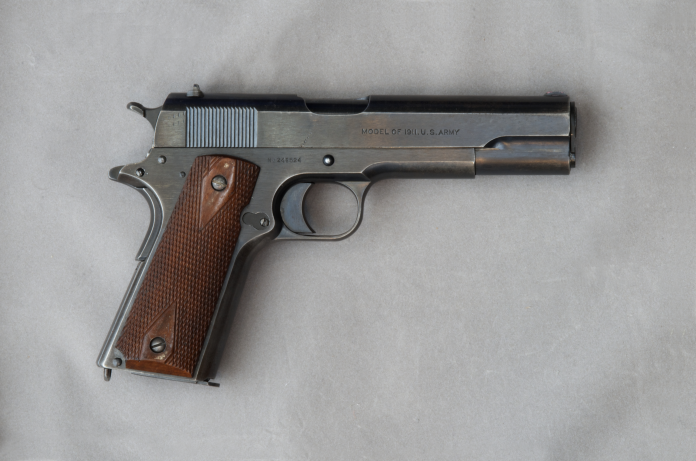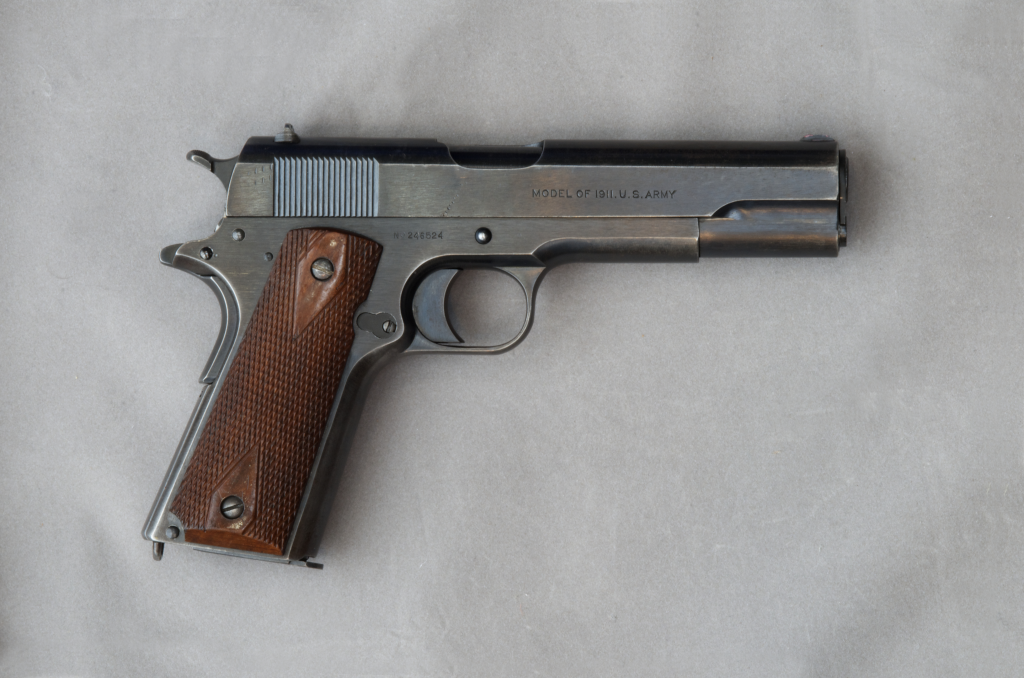
It is unusual for a military sidearm to survive two world wars, Korea, Vietnam, and into the age of contemporary special operations. Unusual still for it to continue in production, unaltered, over a century since its adoption. John Moses Browning’s Colt 1911, chambered in the powerful .45 ACP, is just such a weapon a combination of engineering marvel, combat workhorse, and collector’s item.

1. Origins in Combat Necessity
The 1911 originated from the displeasure of the U.S. Army with lower-caliber sidearms during the Philippine-American War and Moro Rebellion. Accounts of Moro insurgents taking several hits from .38 Long Colt revolvers without being halted led to the Thompson-La Garde ballistic tests of 1904. The board determined categorically that “a bullet… should have a caliber not less than 0.45.” Browning and Colt retaliated with a new rimless cartridge the .45 Automatic Colt Pistol and a recoil-operated, semi-automatic pistol to fire it.
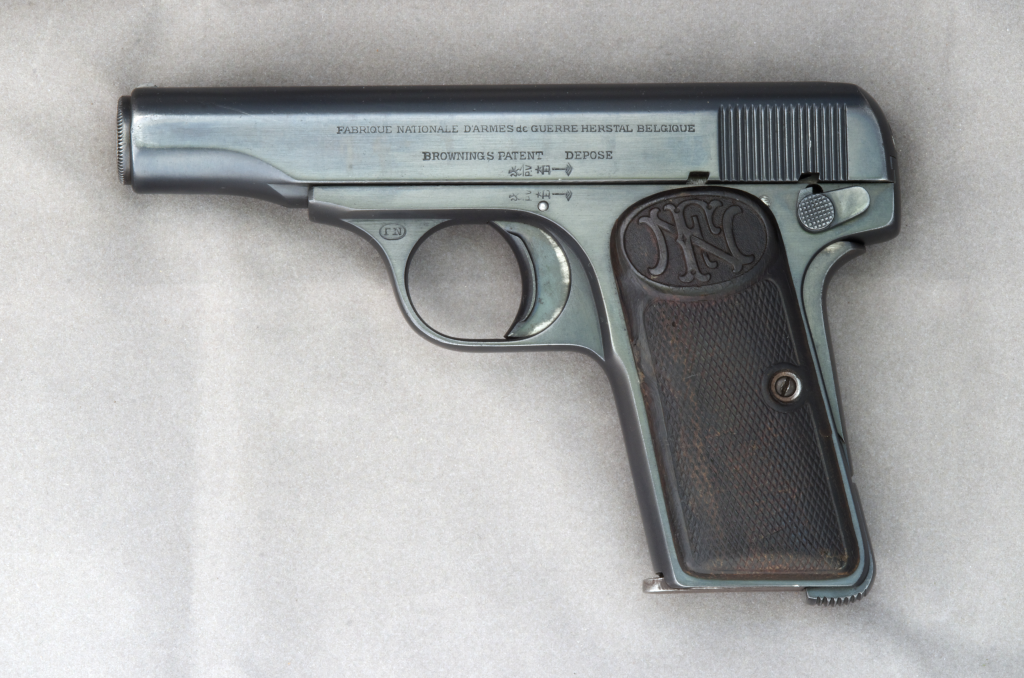
2. Browning’s Mechanical Innovations
Browning’s design used the short-recoil principle, locking the slide and barrel together at the time of firing, and unlocking through a link as recoil pushed the slide back. The pistol featured both grip safety and manual thumb safety, and could be field stripped tool-free. Seven rounds of 230-grain full metal jacket ammunition at about 850 feet per second subsonic but packing more than double the mass of a standard 9mm projectile were the standard magazine load.

3. Performance in the Trenches
Adopted on March 29, 1911, the pistol’s first major combat test came in the mud and close quarters of World War I. Its loose tolerances, by design, allowed it to function despite fouling, and its stopping power earned the trust of officers, machine-gun crews, and raiders. In one celebrated action, Sergeant Alvin York used his 1911 to stop six German soldiers with six shots, cementing its battlefield reputation.
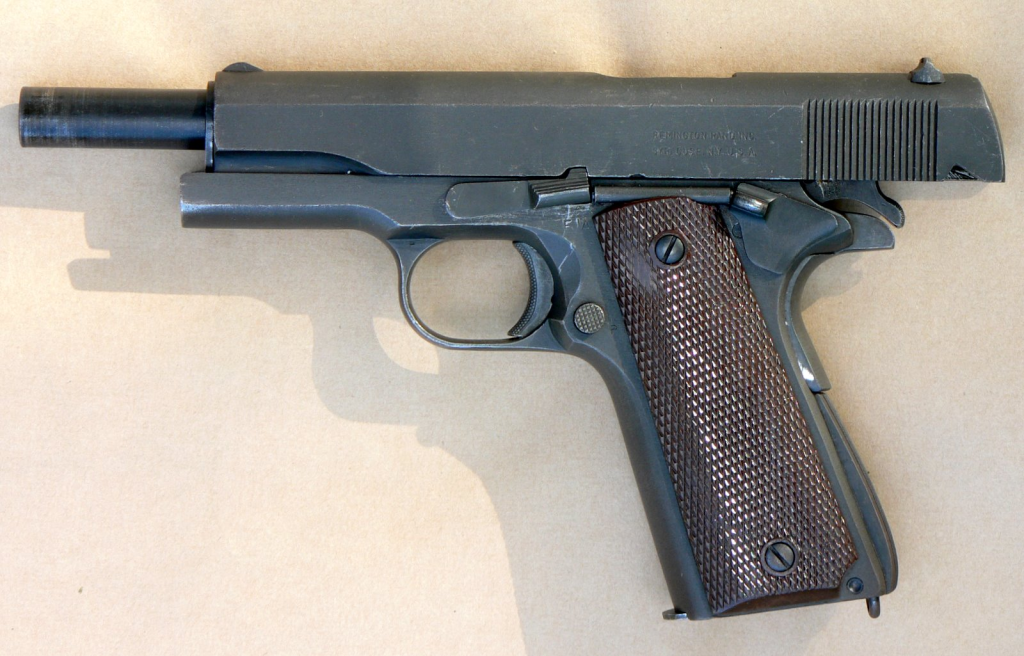
4. Evolution to the M1911A1
The Great War provided feedback that resulted in the 1924 M1911A1 refinement shortened trigger, arched mainspring housing, extended grip safety spur, better sights, and frame relief cuts behind the trigger. These adjustments improved ergonomics without changing the pistol’s basic mechanics or its .45 ACP chambering.
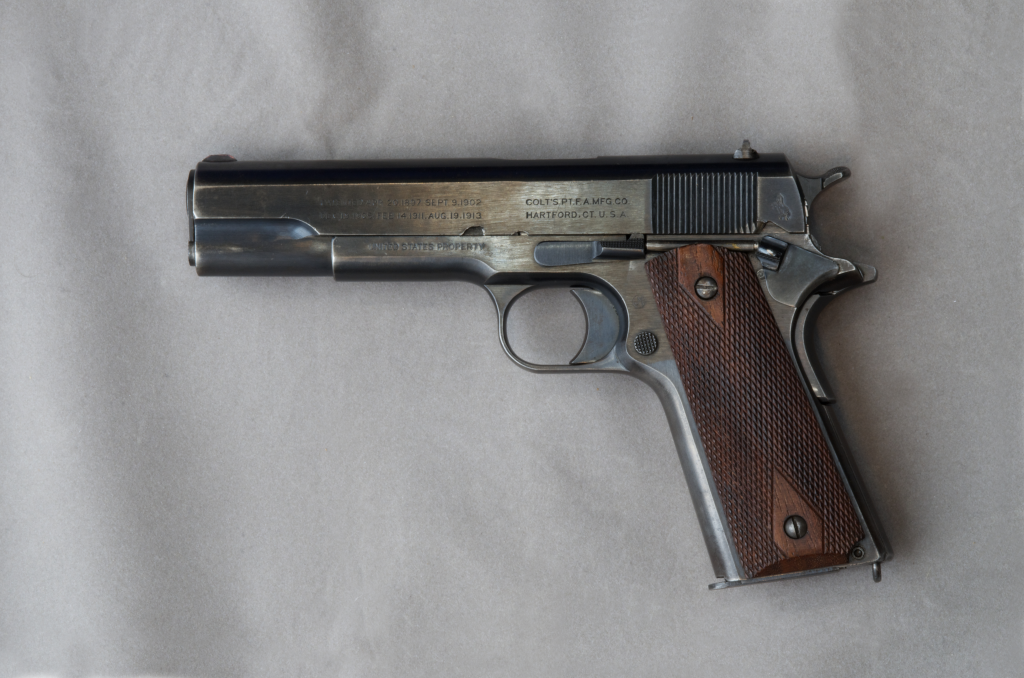
5. Mass Production and Wartime Variants
During the Second World War, demand overwhelmed Colt’s capacity, leading to contracts with Remington Rand, Ithaca, Union Switch & Signal, and Singer Manufacturing Company. Singer’s production run of only 500 pistols under Educational Order W-ORD-396 renders them the most scarce of all U.S. military 1911s. Genuine examples, distinguishable through characteristics like their distinctive high-polish blue finish, uninterrupted frame lines, and “JKC” inspector stamps, can fetch more than $200,000 in modern-day collector circles.
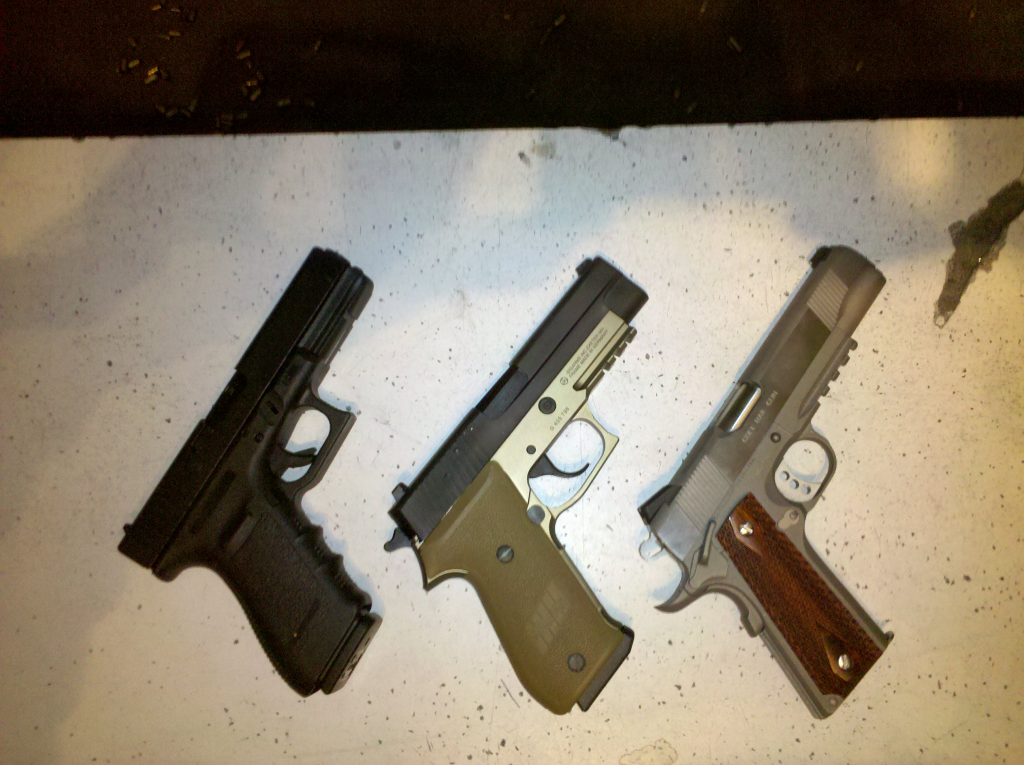
6. Ballistics and the .45 ACP Legacy
The .45 ACP’s heavy, subsonic bullet was designed for short-range stopping power. In Thompson-La Garde experiments, cattle that were shot through the lungs with .45 bullets collapsed in seconds, whereas 9mm bullets took much more shots to have the same effect. Contemporary comparisons continue to demonstrate the .45 ACP carrying higher energy at close ranges than standard 9mm ammunition, and its subsonic velocity rendering it suppressor-friendly in nature a characteristic that has been taken advantage of in specialized applications such as the WWII De Lisle carbine.
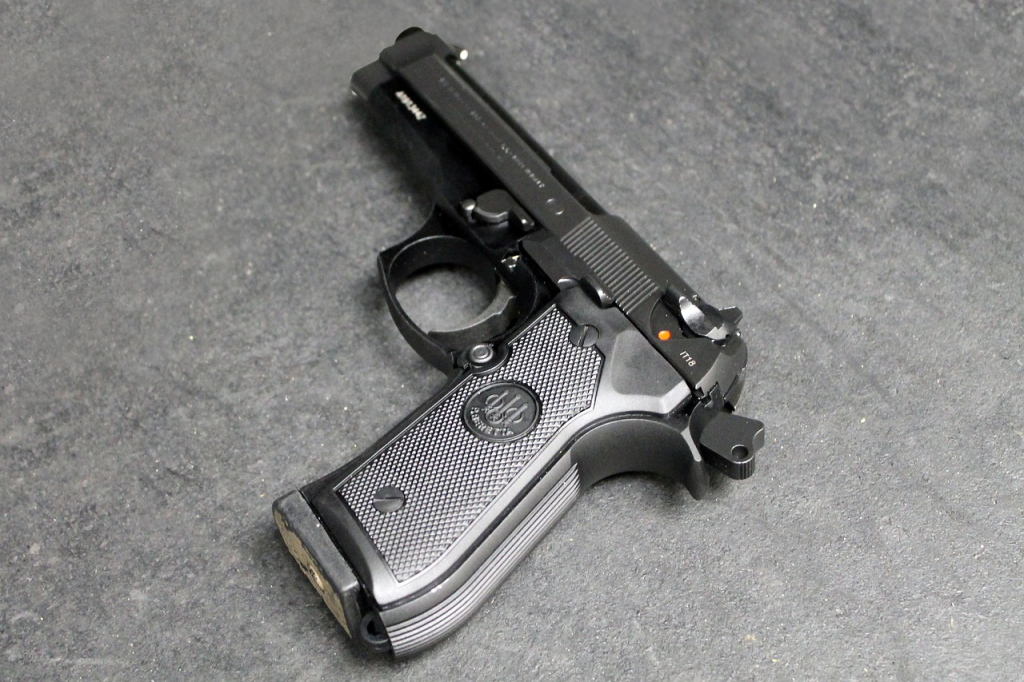
7. Special Operations and Late Service
Though officially phased out by the Beretta M9 in 1985 in a move towards NATO standardization, the 1911 remained in elite units. Marine Expeditionary Unit Special Operations Capable armorers hand-crafted .45s for decades, and some of the pistols carried by special operators during the Global War on Terror were the same frames that their grandfathers received. The controllable recoil, accuracy, and fight-stopping ballistics of the design kept it viable in operations where sidearm performance was crucial.
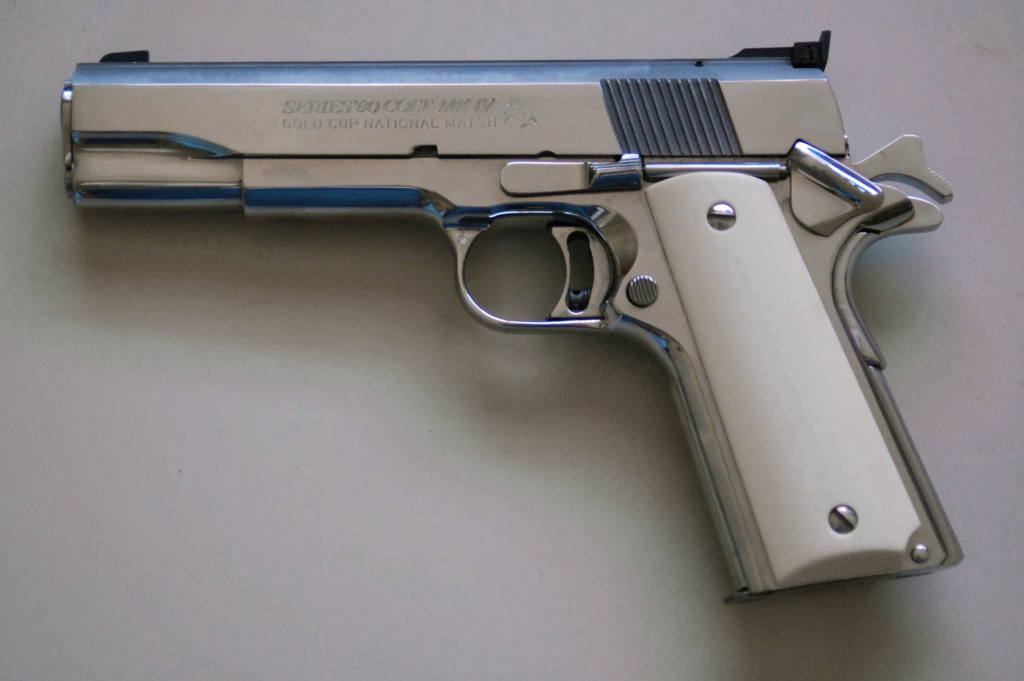
8. The Collector’s Market
Outside of Singers, WWII-production Colts, Ithacas, and Remington Rands in unaltered condition receive high prices. Union Switch & Signal pistols, with their signature Du-Lite finish and tighter checkering, are very desirable. Provenance, originality of components, and authenticity of finish are paramount refinished or mismatched specimens can lose substantial value. For many collectors, the 1911’s desirability comes as much from its service history as from its mechanical superiority.
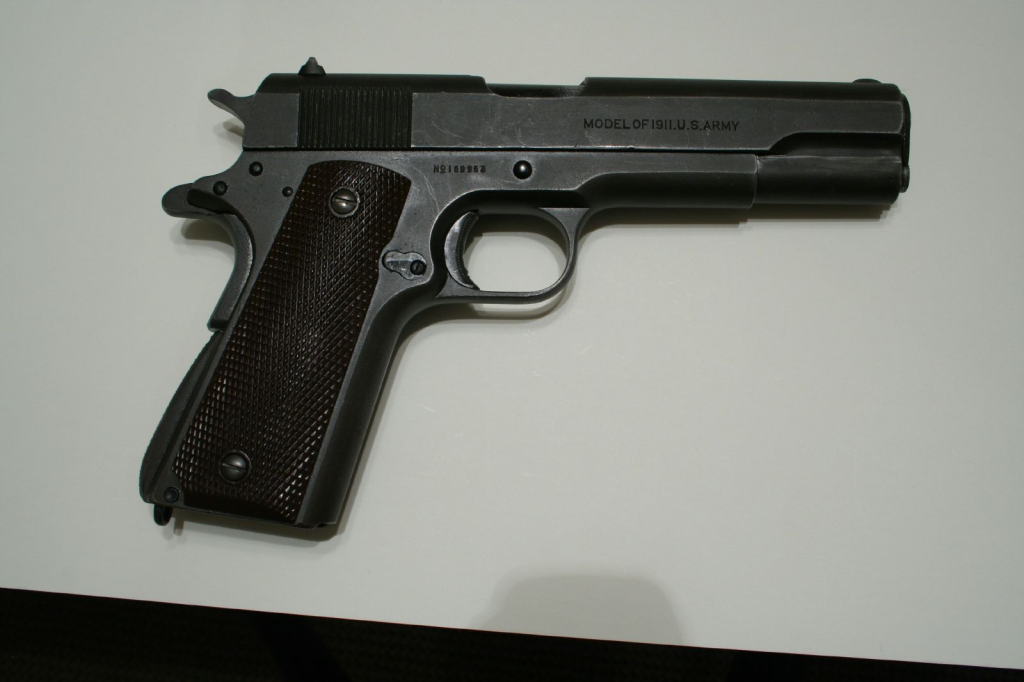
9. Engineering Endurance
From a design point of view, the 1911’s longevity is incredible. Its straight-feed magazine geometry, strong barrel-to-slide lockup, and simple controls have been followed in millions of subsequent pistols. Even contemporary wide-body 9mm iterations maintain the original’s ergonomics and trigger mechanism. The platform’s versatility to competition, defense, and military applications testifies to the solidity of Browning’s original engineering.
The Colt 1911 has a tale of intentional design converging with combat necessity, developed through feedback from soldiers, and bolstered by both its history in combat and its rarity in some configurations. It is a more than sidearm, an artifact of American military history spanning a century relied upon in the trenches of France, the Pacific islands, the jungles of Vietnam, and the hands of today’s operators. Its steel frame supports not only cartridges, but the legacy of a few guns that can rival it.
